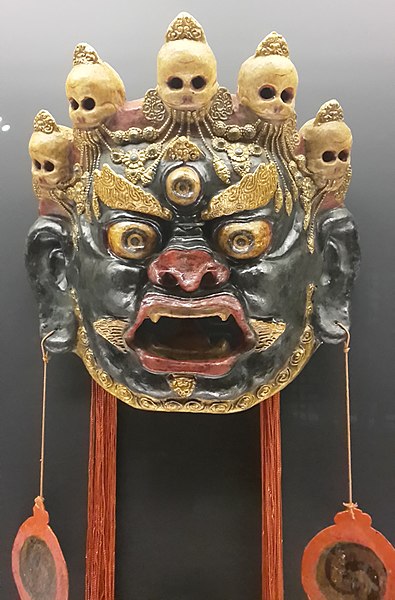Twenty-Four Protective Deities
The Twenty-Four Protective Deities or the Twenty-Four Devas, sometimes reduced to the Twenty Protective Deities or the Twenty Devas, are a group of dharmapalas in Chinese Buddhism who are venerated as defenders of the Buddhist dharma. The group consists of devas, naga kings, vajra-holders and other beings, mostly borrowed from Hinduism with some borrowed from Taoism.
Statue of Dàzìzàitiān (Shiva) on Putuoshan Guanyin Dharma Realm in Zhejiang, China
Statue of Jíxiáng Tiānnǚ (Lakshmi) in Huayan Temple in Datong, Shanxi Province, China
Statues of the Four Heavenly Kings. From left to right: Duōwén Tiānwáng (Vaiśravaṇa), Zēngzhǎng Tiānwáng (Virūḍhaka), Chíguó Tiānwáng (Dhṛtarāṣṭra), and Guăngmù Tiānwáng (Virūpākṣa) in Beihai Park in Beijing, China.
Statue of Mìjī Jīngāng (Guhyapāda), one out of several thousand statues, located at the Maijishan Grottoes, Gansu, China. (World Heritage Site). Carved during the Song dynasty (960–1279).
A dharmapāla is a type of wrathful god in Buddhism. The name means "dharma protector" in Sanskrit, and the dharmapālas are also known as the Defenders of the Justice (Dharma), or the Guardians of the Law. There are two kinds of dharmapala, Worldly Guardians (lokapala) and Wisdom Protectors (jnanapala). Only Wisdom Protectors are enlightened beings.
Tibetan (Citipati mask depicting Mahākāla)





